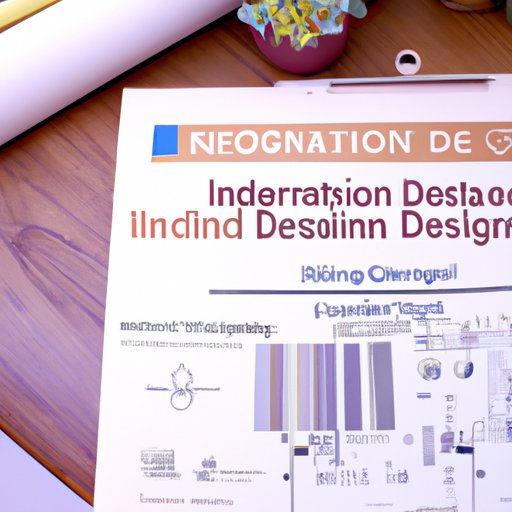Introduction
Interior design is the art and science of creating aesthetically pleasing and functional living spaces. It involves developing plans and specifications that are tailored to meet the needs of clients, taking into account factors such as safety, accessibility, and sustainability. In order to practice interior design professionally, one must obtain a license from their state.
The process of obtaining an interior design license can be daunting, but it is achievable with the proper steps and resources. This article will outline the necessary steps for obtaining an interior design license, so that you can take the first steps towards becoming a licensed interior designer.
Outline the Necessary Steps to Obtaining an Interior Design License
In order to become a professional interior designer, there are several steps that must be taken. These include researching state-specific requirements for licensing, becoming familiar with professional standards and practices, taking education courses that meet state requirements, passing the National Council for Interior Design Qualification (NCIDQ) exam, and applying for your interior design license.
Research State-Specific Requirements for Licensing
The requirements for obtaining an interior design license vary by state. Some states have specific education and experience requirements, while others do not require any formal training. It is important to research the specific requirements in your state before beginning the process of obtaining a license.
The American Society of Interior Designers has compiled a list of state requirements for interior design licensing. This list provides an overview of the requirements for each state, including educational requirements, experience requirements, and examination requirements.
Become Familiar with Professional Standards and Practices
In addition to the state-specific requirements for licensing, it is important to become familiar with professional standards and practices. The ASID Standards of Practice outlines the ethical responsibilities of interior designers, and provides guidance on how to provide services ethically and responsibly. It is important to understand and adhere to these standards in order to practice interior design professionally.
Take Education Courses That Meet State Requirements
Once you have researched the state-specific requirements for licensing, you can begin to take the necessary courses to fulfill those requirements. Many states require interior designers to have a minimum number of hours of continuing education in order to be eligible for licensure. Online courses are available to meet these requirements, and some states even offer free or discounted courses through their licensing boards.
Pass the National Council for Interior Design Qualification Exam
Once you have completed the necessary education requirements, you must pass the NCIDQ exam in order to obtain a license. The NCIDQ exam is designed to test your knowledge of interior design principles and practices, and assess your ability to practice interior design safely and responsibly. It consists of three sections: the Interior Design Fundamentals Exam (IDFX), the Interior Design Professional Exam (IDPX), and the Practicum Exam.
In order to prepare for the NCIDQ exam, it is recommended that you take an NCIDQ review course. These courses provide an overview of the material covered on the exam, and can help you identify areas where you need to focus your studies. There are also practice exams and study guides available to help you prepare.
Apply for Your Interior Design License
After passing the NCIDQ exam, you can apply for your interior design license. The application process varies by state, but typically involves submitting an application form, proof of passing the NCIDQ exam, and payment of a fee. Once your application has been approved, you will receive your license and can begin practicing professionally.
Conclusion
Obtaining an interior design license is a lengthy process, but it can be accomplished with the right steps and resources. Researching state-specific requirements, becoming familiar with professional standards and practices, taking education courses, passing the NCIDQ exam, and applying for your license are all necessary steps for becoming a licensed interior designer.
For more information on obtaining an interior design license, visit the ASID Licensing page, which provides resources and information about licensing requirements and processes. With the right guidance and preparation, you can take the first steps towards becoming a licensed interior designer.
(Note: Is this article not meeting your expectations? Do you have knowledge or insights to share? Unlock new opportunities and expand your reach by joining our authors team. Click Registration to join us and share your expertise with our readers.)
